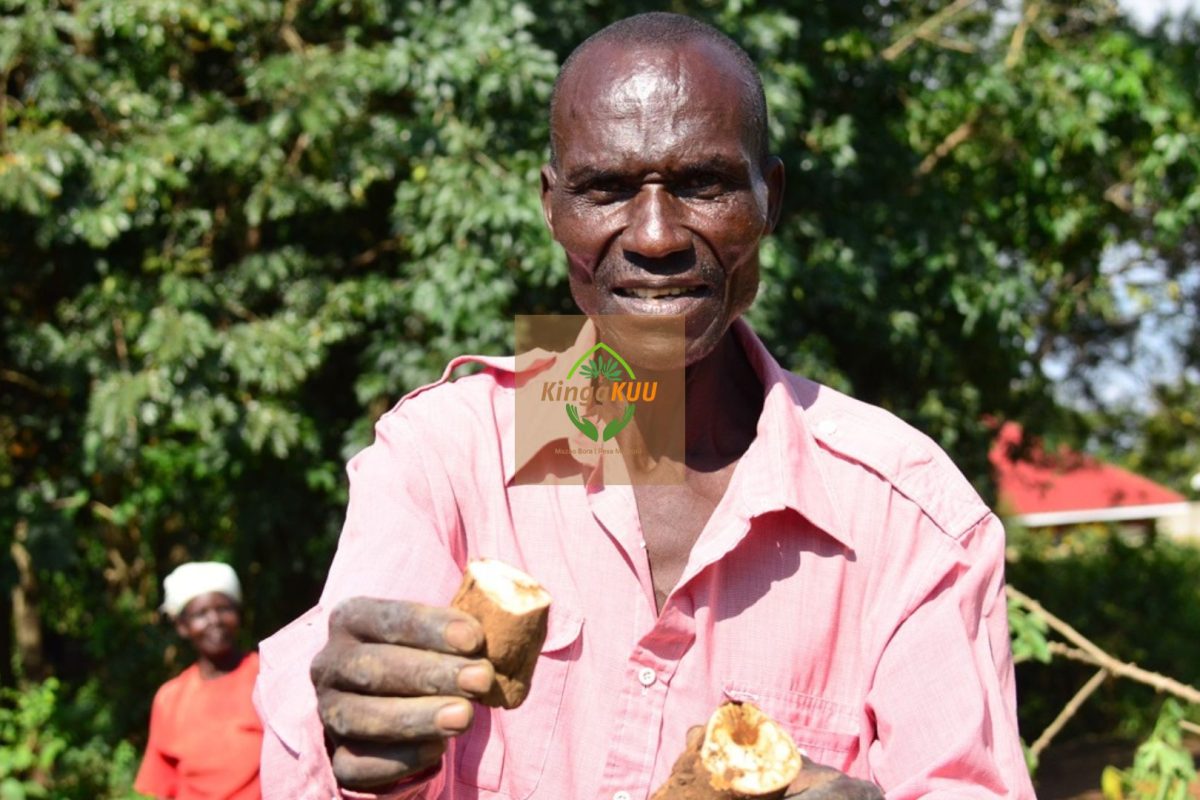Francis Ekisa Otiengi cannot name all the cassava varieties grown in Teso, Busia County, western Kenya, where he lives. They are very many, he says, naming MM, Selina, Shibe, Karembo, Siri, Nzalauka and Karibuni, and then his voice trails off until he mentions Tajirika.
It is less prone to diseases, he says. It is not as attacked by viruses as the others. It is the best they have come across, he says.
“The biggest struggle that we have had over years of cultivating cassava, and the challenge our parents also faced for years, was looking for a variety that could be tolerant, or better yet, completely resistant, to the cassava brown streak disease, and to the cassava mosaic disease,” he says.
He is not resigned to fate, as he has experienced the benefits of Tajirika, and he is welcome to any new varieties that are even more efficient. He reiterates that he, and his fellow cassava farmers in Busia region, are looking for a variety that is “high yielding, early maturing, and clean that we can share or sell seeds for food security.”
Cassava is the local staple. For him, it is irreplaceable.
“I am not even used to ugali from maize flour. I grew up knowing and liking the cassava one,” he says.
He has been attending seminars and learning more about cassava farming , and from one of such he got the first seed of the Tajirika variety about half a decade ago.
He would have wanted to become a seed multiplier, but there was a challenge that prevented him from that.
“The regulatory requirements stipulate that seed multipliers have to have up to 4 acres. However, there is a shortage of land here. My family and I have just over 2 acres in the farm,” he says.
When we ask him about the prices, his tone changes.
“We certainly can get better. You get processors buying wholesale from us at Sh10 per kg. There are groups with processing plants for value addition that process and dry, such as in Tangakona Commercial Village, and they make flour which can make products such as chapati and mandazi,” he says.
Mr. Ekisa has benefited from the ability to monitor the health of his Tajirika crop using an app.
He has used Nuru, an Artificially Intelligent Assistant that uses machine learning to accurately recognize leaves damaged by Cassava Mosaic Disease (CMD) and Cassava Brown Streak Disease (CBSD) as well as damage by red and green mites.
At the prospect of KingaKuu, he beams.
“Bigger yields? Resistance against CBSD? Bring it on,” he says.


